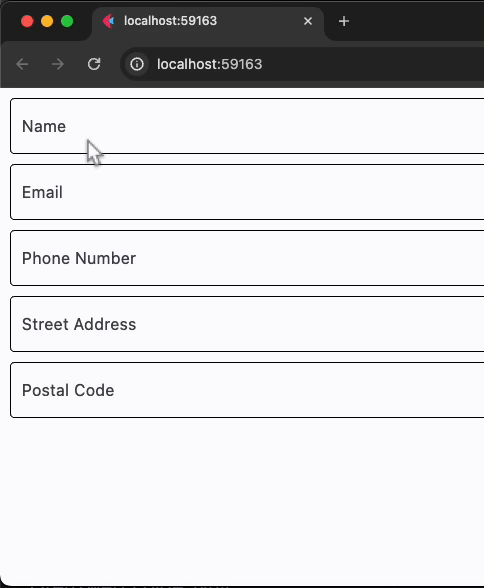AutofillGroup
Inherits: Control
Properties
-
content(Control) –The content of this group.
-
dispose_action(AutofillGroupDisposeAction) –The action to be run when this group is the topmost
Examples#
Basic example#
import flet as ft
def main(page: ft.Page):
page.add(
ft.AutofillGroup(
content=ft.Column(
controls=[
ft.TextField(
label="Name",
autofill_hints=ft.AutofillHint.NAME,
),
ft.TextField(
label="Email",
autofill_hints=[ft.AutofillHint.EMAIL],
),
ft.TextField(
label="Phone Number",
autofill_hints=[ft.AutofillHint.TELEPHONE_NUMBER],
),
ft.TextField(
label="Street Address",
autofill_hints=ft.AutofillHint.FULL_STREET_ADDRESS,
),
ft.TextField(
label="Postal Code",
autofill_hints=ft.AutofillHint.POSTAL_CODE,
),
]
)
)
)
ft.run(main)
